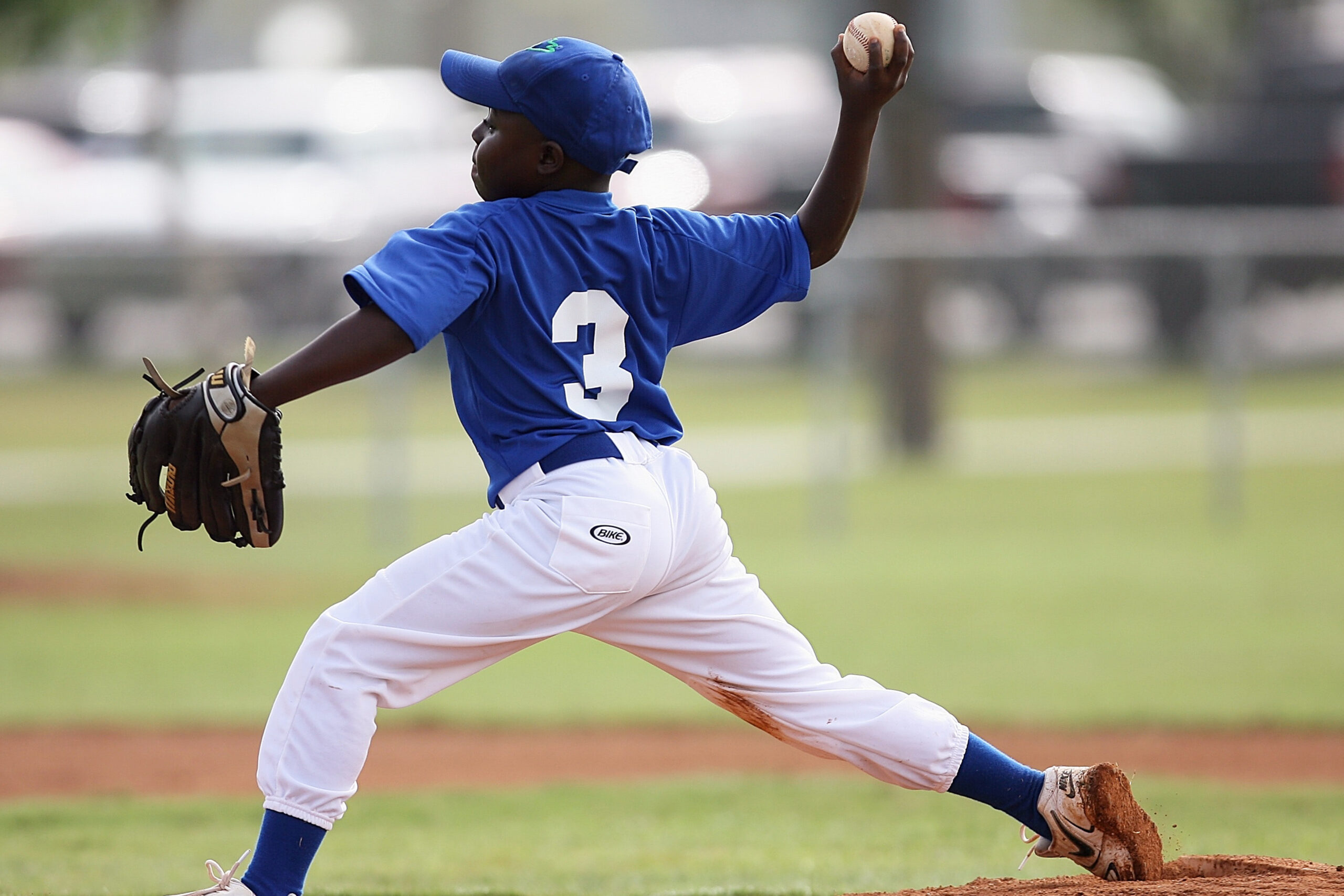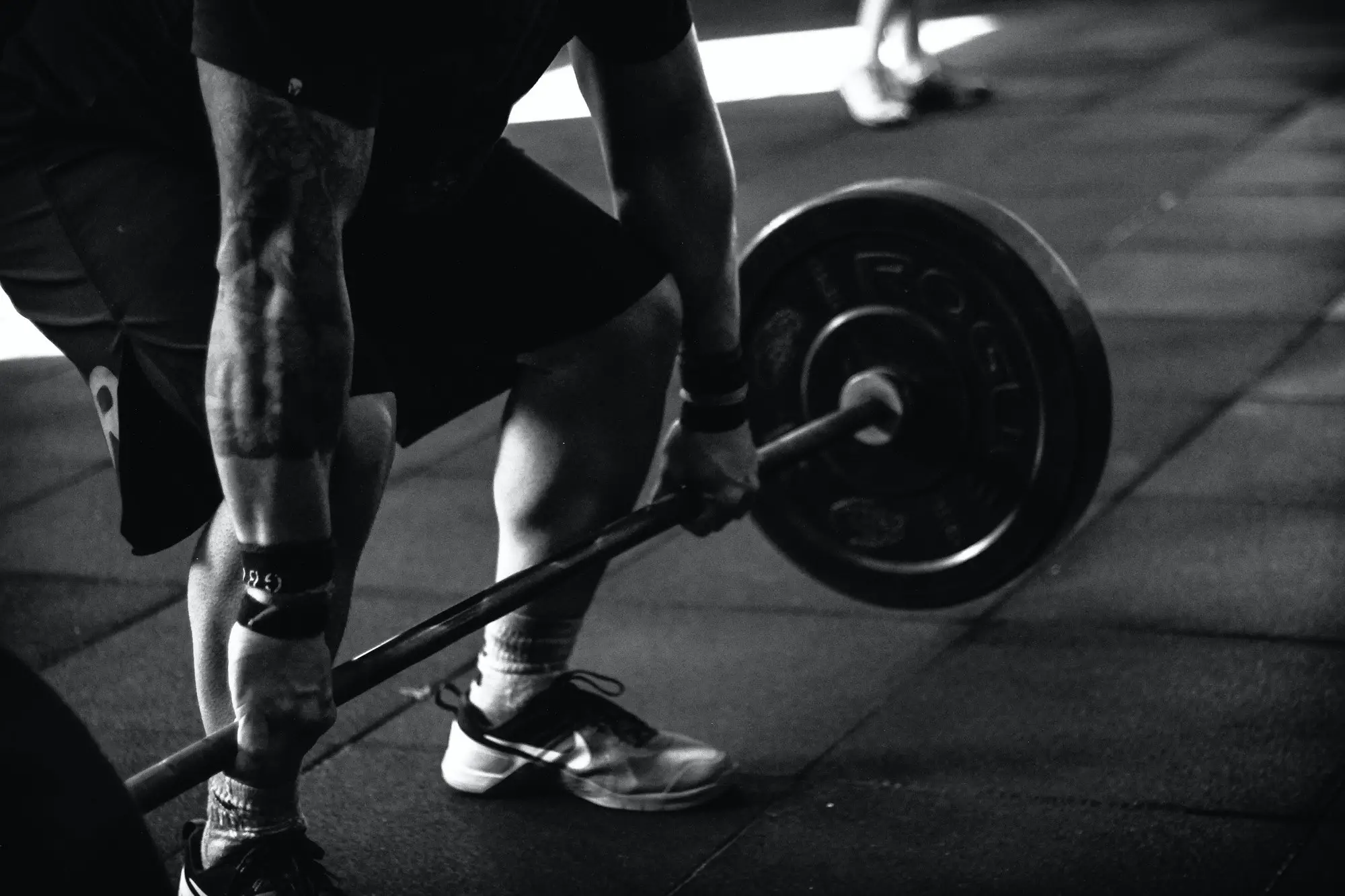Few things are more important to a successful pitching career than velocity. At the same time, few things are more elusive.
In today’s game, a 90mph fastball is considered below average, leaving many high school and college players wondering how do I increase my pitching velocity? It is important to remember that velocity is a foot in the door, but other variables like control, command, and movement are still needed to pitch at elite levels. Many physical and mental factors intersect to form a faster pitch, and approaches vary from isolating certain targets to more holistic strength training.
Elite-level pitching is an incredibly complicated topic. There are many factors that will affect pitching speed and strength. If you are looking for some tips on how to increase your pitching velocity, we are breaking down some of the most influential factors of pitching speed in this article. Here are some of our best tips for increasing pitching speed and velocity.
Add 5-10mph to Your Fastball

Highlights
- Video Analysis
- Strength Development
- Mechanics
- Drills
- Phone Sessions
Build Lower Body Strength with Strength Training
The posterior chain, which includes the hamstrings and glutes, are among the most powerful muscles in the body. These muscles are responsible for grounding a pitcher and absorbing the force of his throw. There is no question that increasing the strength of your lower body is one of the most important factors when it comes to throwing harder and faster.
Is lower body strength everything? No. But it can make a huge difference in the velocity of a pitcher’s throw. It is crucial to emphasize all-over body strength with a tailored training routine but building lower body strength is the first step a pitcher should take to increase their raw pitching power.
The most basic moves can be used to develop the muscles needed to perform as a pitcher. Consider forming a training routine that includes squats, deadlifts, lunges, hip thrusts, calf raises, chest flies, curls, box jumps and planks.
One thing to note is that increasing your body strength only gives you the ability to produce more power when throwing, you will still need to develop proper pitching mechanics to utilize that strength. Some pitchers have been known to throw 100+ MPH fastballs while remaining rather weak in the weight room. That is because they utilize proper pitching mechanics and techniques to deliver the power where they need it most.
Pay attention to the type of body mass you are adding. Adding more lean muscle mass, or hypertrophy, allows for greater strength and stability, particularly in the lower body. Adding more fat than muscle, though, will increase body mass but also increase the chance of injury when that mass needs to support added force. As with any exercise or body conditioning, weight and mass should never be gained too quickly; a more gradual process allows for greater control.
Learn and Use Proper Pitching Mechanics and Techniques
As mentioned, body strength only increases the capacity for power, without efficient and effective pitching mechanics it is much harder to achieve greater velocity outputs. One change in mechanics can change everything, so understanding every small movement in the body and how it correlates to the pitch is often necessary.
Learning proper pitching mechanics and techniques can take time and discipline. Use your free time to effectively study some great pitchers through film and literature. If you can, seek professional help from a pitching training manager to perfect your skill and technique.
One small technique can affect your entire throw and learning what each move a pitch does is imperative for increasing pitching speed. When practicing, do not expect changes to occur overnight, especially if you need to unlearn certain natural movements and replace them with other, more intentional movements. Practicing small mechanical tweaks to foot position, posture, hip rotation, stride length, or ball release position (to name a few) can mean a huge difference in speed.
Gain Arm Flexibility and Muscle Memory with High Throwing Volumes
The body responds to stimuli and stress with very specific adaptations. Repetition is a huge factor in learning pitching mechanics, but it is also crucial to increasing speed. This is because the physical act of pitching a baseball is the single fastest motion that a human joint can make, and so a pitcher must acclimate his body to be successful. However, this is a very delicate balance, particularly at a young age, because the same repetitive pitching motion can be detrimental to growing bones and muscles.
Exposing an up-and-coming pitcher to a high-throwing volume can greatly influence the players throwing velocity, but it is imperative that it is done with proper rest between sessions. In order to avoid common and potentially career-threatening shoulder and elbow injuries, it’s imperative to follow safety guidelines, limits, and procedures for training and conditioning.
When it comes to increasing pitching speed through volume throwing, seek the help of a professional coach. They can help guide you through the physical effects of such a training regimen while working to maintain a safe training environment.
Increase Mobility with Pitching Drills
Mobility is a fundamental factor — along with strength, power, and mechanics — to increasing pitching velocity. Achieving greater and sustained mobility is possible through a number of exercises that allow the body (not just the pitching arm) to move more efficiently.
A single pitch relies on the hips rotating the pelvis, the torso holding firm against torque between the pelvis and the spine, all while the feet stay firmly planted.
From leg lift to hip and shoulder separation to release and follow-through, each of these movements requires the body to be flexible throughout the movement. Therefore, it is essential for increasing your pitching velocity that you gain additional mobility through flexibility. These will allow your body to build up additional torque, increasing your pitching speed.
Pitching drills, especially those that focus on stretching and lengthening the limbs and muscles, are particularly helpful in increasing mobility. These drills work by targeting specific areas of the body with a goal-oriented focus. You can alternate conditions for different drills and easily measure the results to ensure efficiency.
One of our favorite stretches or drills can be done with a bat.
- Simply hold the bat out in front of you parallel to the ground.
- Grip the bat using both hands with the palms facing towards the ground.
- Begin the stretching motion by pulling your left arm towards the left and then up towards the sky.
- The right arm should be following behind.
- Try to keep both arms as straight as possible.
- You should feel stretch in your shoulders, upper back, and rotator cuffs.
- Keep moving your arms and the bat behind your head, again, keeping your arms as straight as possible.
- Stand tall and keep your back straight and your chest high.
- Try to pull the bat as far backward as you can to really feel the stretch.
- Finish out the move by stretching out the right-hand side and pulling the bat towards your upper right.
- When you reach the center again, you can repeat the move in the opposite direction.
This is an insanely simple move that can be done daily. Not only will it help increase your flexibility and mobility, but it can also aid in maintaining the overall health of your muscles.
Get in the Right Frame of Mind
While physical preparation makes up the bulk of conditioning and training to increase pitching speed and velocity, mental preparedness cannot be underestimated. If your head isn’t in the game (literally), all the other factors may fall by the wayside. Taking care of yourself off of the field is imperative to reap the benefits of your training and ensure that you are in the right frame of mind to employ all of your hard work when the time comes.
While it may seem like more of a personal, and slightly vague, concept, there is hard science that shows that mental and neurological fatigue can be exacerbated by, and subsequently hinder athletic performance. Playing a competitive sport can exhaust not only the body but also the mind, and so adequate care is important in both regards. Exercising your mind will lead to an increased focus on game day, but it requires the same kind of rest and recovery as your body does.
So what can you do to ensure that your mind is on the same page as your body? Here are some of the factors that will contribute to your overall mental health on game day:
- Get enough sleep. This one should go without saying. As an athlete, you need to make sure that your body and mind are well rested before game day. One cannot perform without the other so be sure that you are getting enough quality sleep.
- Eat a balanced diet. Have you ever heard the term you are what you eat? In this case, your mind and body are fueled by what you consume. You need to eat a well-balanced and healthy diet to increase your pitching performance. Likewise, consuming adequate amounts of water and fluids is also imperative to remain in peak physical and mental condition.
- Find a way to de-stress. Having an outlet for releasing stress is imperative for mental well-being. Your de-stress method is going to be unique to you. It could be mediation, golfing, art, the sky is the limit. Just find something that helps to relax and focus your mind and stick with it when you feel anxious, stressed, or mentally exhausted.
- Train your brain to perform to the best of your ability with intent and discipline. This tip is all about building mental toughness. While the brain is not a muscle, it can still be trained. Every day is a day to build up mental toughness and put yourself in the right frame of mind for going pro. Sports psychology is a real thing and there have been countless books written on the topic. If you really want to perform to the best of your ability, you have to overcome the mental hurdles and pitch with intent and discipline.
Avoid Muscle Fatigue with Proper Rest
Most coaches and players know that muscles need rest in order to recover and maximize the benefits of exercise. Avoiding muscle fatigue, or a decrease in the muscles’ ability to generate force, is also necessary to prevent injury.
Muscle soreness is often a good indicator of muscle fatigue and a sign that you might need to take a break. However, not all injuries begin with muscle soreness, that is why it is vital to learn how different training methods and throwing volumes impact your body. It is up to the player, coach, and parents to determine what scheduling of training, throwing, and conditioning is optimal.
If you are looking for some general pitching guidelines, take a look at our pitch limit and rest guidelines. This chart will give you a good starting point for the maximum number of pitches that you should be throwing in a game and how many days of rest you should have in between pitching. Major league teams go to great lengths to protect their ace pitchers from injury, and you should follow suit. One injury could mean the difference between a spectacular career and a missed opportunity. So, take care of your body and it will take care of you.
Final Thoughts
There is no one thing that is going to increase your pitching speed by 10+ MPH overnight. However, a well-thought-out training program can. If you want to take your pitching game to the next level and possibly play at the collegiate or professional level, you have to take your training regimen seriously.
Come up with a plan that takes into account all of the factors that we have outlined here, and practice daily. Over time you will develop all of the skills and strength that you need to become a better pitcher. Not only will you throw harder and faster, but you will develop the mind of a professional pitcher as well. Hopefully, you have found this information informative and helpful.



